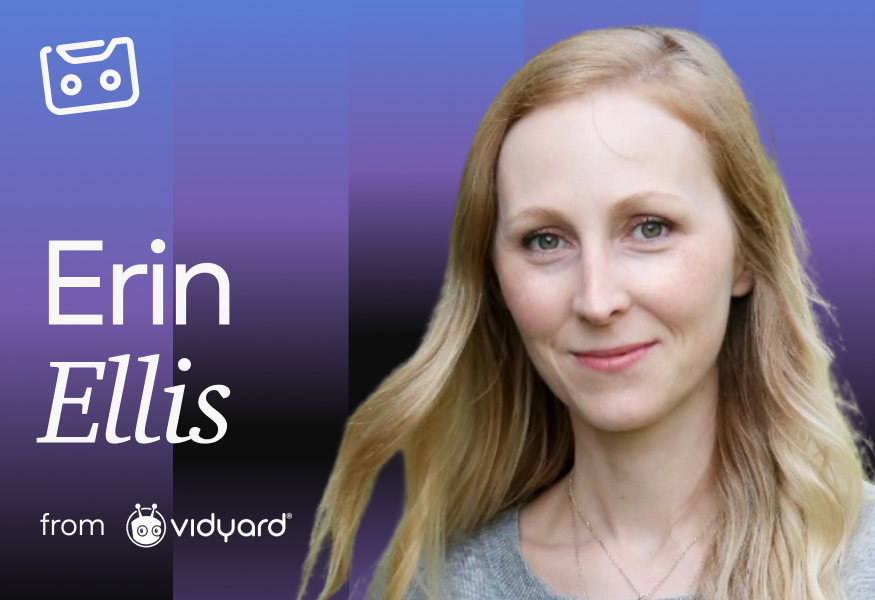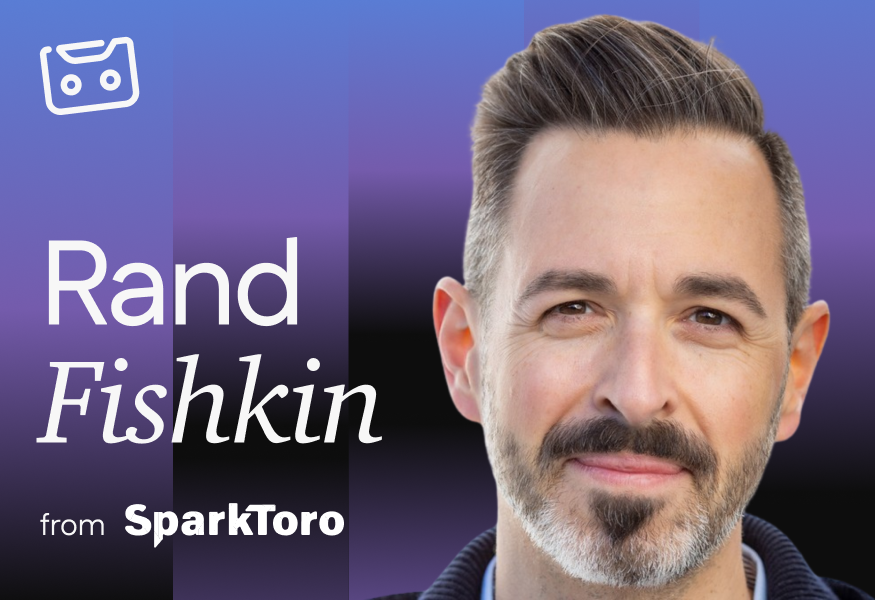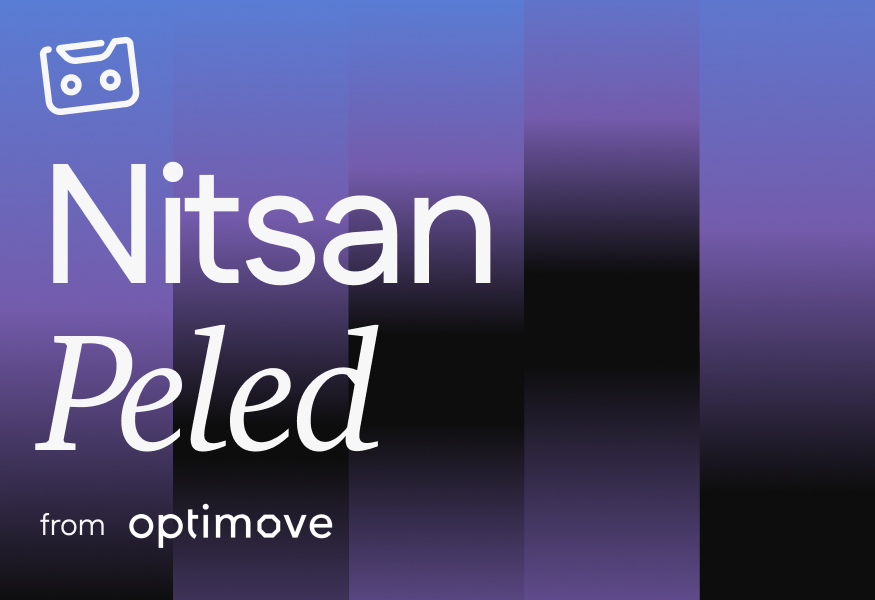For Erin Ellis, fresh out of school, the generalist path was the most appealing. And it’s proven to be a scenic route, taking her from segment marketing to sales enablement at BlackBerry to a combination of the two at D2L, before eventually throwing her into the world of content marketing.
Today, you can find Erin on the specialist path in her role as Content Manager at video hosting platform, Vidyard.
It’s here that she joins Tom for Demandist to share insights and tips from over a decade of marketing experience. Including how to get the most out of your content, utilising your team for creation and promotion, and why you don't need expensive gear to make engaging videos.
Whatever path you’re on, wherever you’re at in your career, there’s something for every content marketer in this episode.
You don’t always need to be churning out content
Type the question “how often should I blog?” into Google and you’ll get 1.6 billion results of differing opinions on what’s the best posting frequency for SEO, increasing awareness, making money, and the list goes on.
Depending on what you read, the answer can be anything from 1-4 times a week to multiple times a day.
For Vidyard, when Erin joined the team, it was two posts a week. But they quickly realised that the number of blog posts you publish is irrelevant if no one is reading them:
“When I started [at Vidyard] it was just a lot of, ‘Let's just get like two blogs up a week. And let's just pump it out. And let's just get it all up there,’
“A year in, [we] quickly realised, ‘we’re creating all this content, but nobody's actually consuming it.’”
So the team took a step back and looked at how to create content that would offer value to readers, as well as long term SEO benefits.
“[We said], ‘Okay, let's consolidate and optimise and make pillar content based on a topic. And then you can create spokes or different sub pieces supporting that overall pillar piece or hero guides.
“So there was a huge exercise in [the] cleanup and mapping. That being said, a lot of the content already existed. It was just getting our arms around where it was, updating it and then bringing it together.
“It was a lot of work. But it was definitely a good investment. Because those pages now exist for us. And now it's just all about optimization and making sure that they're up-to-date. But the foundation has been built. So I definitely say investing in that pillar content foundation is key.”
Pillar content goes above and beyond a standard blog post to tell the reader everything they need to know on a particular topic.
Former Demandist guest, Rand Fishkin, coined the term “10x content” for it, meaning that it’s 10-times better than the best result in Google. So a person doesn’t need to go anywhere else.
For your efforts, pillar content gives you:
- Lower bounce rates: Because readers have everything they need, they won’t rush into hitting the back button
- Sustained traffic: Keeping pillar content optimised and up-to-date ensures its value doesn’t diminish over time
- Greater brand awareness: By creating content that is better than anything else out there, you establish yourself as a go-to source for information. This can increase the number of shares your content gets, as well as the number of people linking to it
- Improved search visibility: The more in-depth content is, the more keywords it targets, the more value it offers to the reader, the more people read, share and link to it, the more visible it will be on SERPs
Look at the content on your website. Which topics can you go into depth on? What blog posts can be pulled together to create a one-stop-shop hero guide? If quantity isn’t currently working for you, quality might:
Make your content work hard
When Erin mentions pillar content foundation being key, the foundation is that ability to build on the strength and success of that original in-depth piece to maximise its potential:
“What we're looking to do is [take the] content that we have and turn it into micro pieces and [ask] ‘Where can it live? And how can we sort of share it in as many channels as possible?’
“[For example], we're looking at our top-performing blogs and creating video versions. So, if it takes you 10 minutes to read the blog, we create a five-minute quick-hit video that we embed right in the blog, so you have the option to read or watch. And then we also upload that video to our YouTube channel.
“So if you're searching for a topic, you could happen upon it that way as well. And then we use that video content, either in its entirety or clips of it. To promote across our various social channels or email campaigns.”
Repurposing content in this way lets you spread value to a wider audience on multiple channels, increasing engagement and brand awareness. But if creation is 20% of your time. The other 80% should be promotion. For content to have an impact, you need to make it visible.
For this, Vidyard taps into its people. Which takes us nicely onto the next key takeaway.
Mine your team for creators
Your team are your biggest cheerleaders. They’re also likely to be more closely connected to people in your target audience on a personal level than the company is.
It makes sense to use this to your advantage to get more eyes on your brand and content:
“Social is a huge part of [content distribution]. The traditional, just getting your team, your company, to share your content, as people relate more to a person sharing a blog post versus our corporate handle sharing a blog post.
“So there's using your people to elevate your brand. And then also, on that note, getting your people to micro-post for you on LinkedIn. So they don't necessarily have to be sharing a link.”
They also utilize the expertise of those in their team, whether that’s specific knowledge from one expert in particular:
“If you have an ABM [account based marketing] expert on your marketing team, he or she could be sharing some insights.
“Our ABM lead has spoken on webinars and she's sharing stuff on LinkedIn. So it's not necessarily Vidyard or video. But there's a lot of knowledge sharing going on on social that, as a unique distribution channel where you don't have to be pushing your product, you can just be sharing with your community and like-minded people.
“And if people happen to think, ‘Oh, where does that person work? Oh, Vidyard. What's that?’ Then you kind of have some awareness there.”
Or more general content from various employees:
“It just comes back to those relationships where, if you're looking on LinkedIn and you have one of your sales reps that's shared some great insightful piece of content, reaching out to them one-to-one and being like, ‘Hey, do you want to appear on a TikTok video? Or ‘Hey, do you want to contribute to a blog post or come on our podcast?’ or whatever it is.
“It’s just being very mindful of what people are doing—especially sales reps out in your communities — and then forging those personal connections. Because again, if I put out a call on a Slack channel [saying], ‘Hey sales, have any examples of…? Or ‘Want to do this?’ versus ‘Hey Jim, do you want to come help me out and do a quick video on how to…?’ they're a lot more likely to engage and participate in that.
“If you could get a handful of super-engaged employees, helping and sharing that's gonna go a long way.
“So it's kind of looking within your pool of resources of people who are already doing cool fun things out there on their own, and then pushing them a little bit to bring it into their professional setting because they have that foundation.”
You don’t need fancy equipment
As a company that relies heavily on its office culture for ideas, togetherness, and morale, being forced to work remotely during the coronavirus pandemic was a big blow for the Vidyard team.
But it’s one they turned into a positive by using it as an opportunity to upskill:
“We did a challenge that everyone on the marketing team had to create an [MTV Cribs-style] video of their home and do a home tour showing off their crib.
“We have two video producers in house and they pulled together some assets—some B-roll, some intro [and] outro music—and then did a quick video tutorial on how to use QuickTime to edit video.
“And so now the entire team has some sort of baseline where we have some production skills. So that's that's kind of a way of thinking about how you could upscale your team or yourself.”
And none of this required any kind of expensive equipment or software to work:
“[Get] creative with the idea of remote video production. You can use the tools that you have. You don't need fancy things. I have a simple ring light and webcam. You could use your computer's webcam. You could use your phone. Or if you want to get a little fancier, set up a DSLR camera.
“It doesn't have to be super fancy. Natural light from your window [can] make it happen.
“You just have to think outside the box a little bit”.
It’s not the equipment that makes you stand out, it’s story you tell with it. Look at ways to make the most of what you have to empower yourself and your team and create valuable content for your audience.
The future of video marketing is people and stories
According to Cisco, 82% of internet traffic will be through videos by 2022. And with 93% of marketers saying that video is an important part of their marketing strategy, you can expect plenty of competition if you’re going down the route of producing video content.
But again, this doesn’t necessarily mean going out and investing heavily in big-budget productions. Erin believes the future of video is rooted in authenticity.
“More creators and individual creators and making those connections and authenticity, less money spent on huge big brand videos and more money invested in people and just telling stories.
“And again, just the individual creators, I don't think things need to be highly produced. Is it an authentic message? Is it connecting on a human to human level? I think that's much more valuable and sort of where I see things going.”
Meet the makers
Maker Mixtapes is a podcast about the entrepreneurs, creators, and marketers building impressive things in their field. From content marketing to YouTube and growth, agency life to e-commerce and SaaS, this podcast aims to dissect and share lessons from their success.
Listen to Erin and other episodes from the brightest minds in tech and business on Spotify or Apple Podcasts.












